Info
Subfamily: Panicoideae
Genus etymology: Cenchrus = "millet" [Greek]. However this is a misnomer, the only millet species in this genus is C. americanus, and this was treated as Pennisetum when Cenchrus was erected.
Species etymology: setosus = "abundant bristles" [Latin] refering to the inflorescence
Photosynthetic type: C4 (warm season)
Nativity: naturalized - intentional
First recorded in Hawaiʻi: 1923
Map
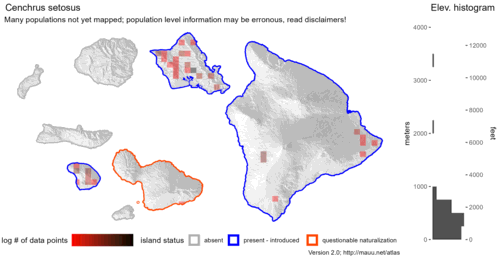

Inflorescence

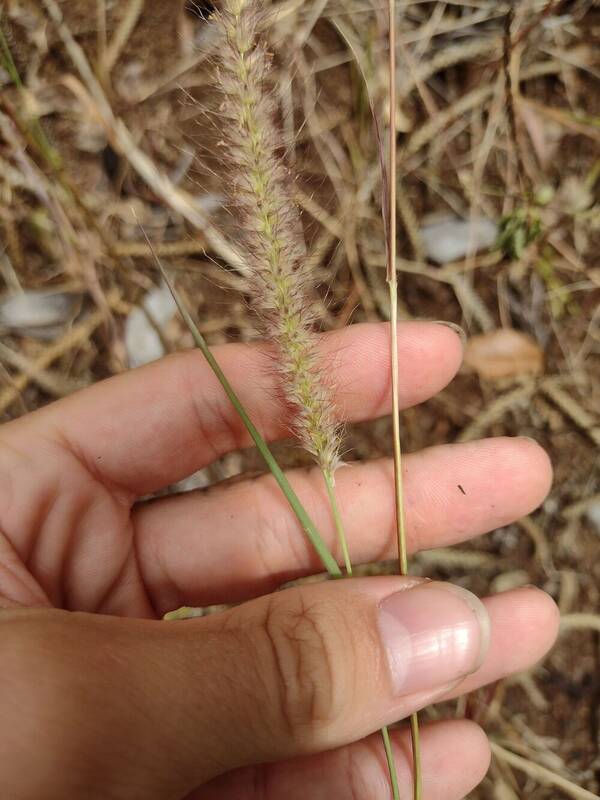
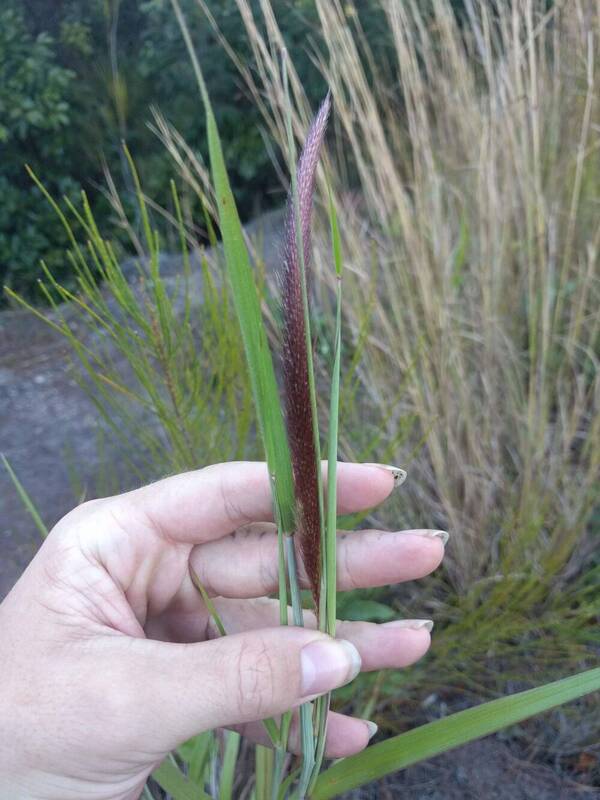
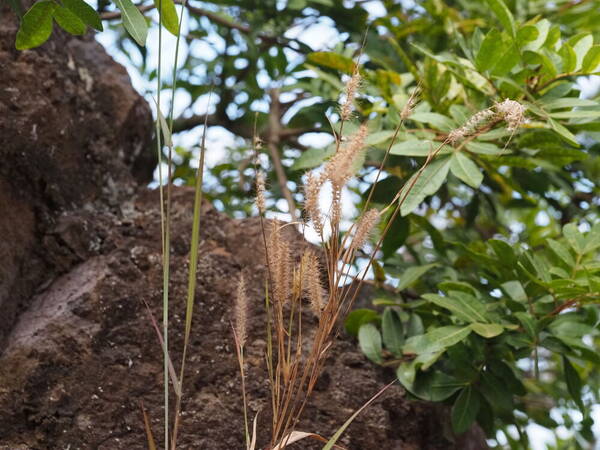
Plant
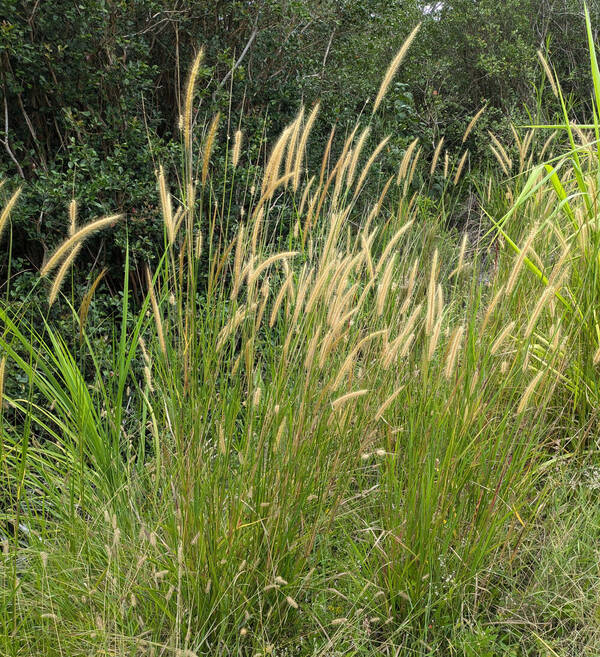
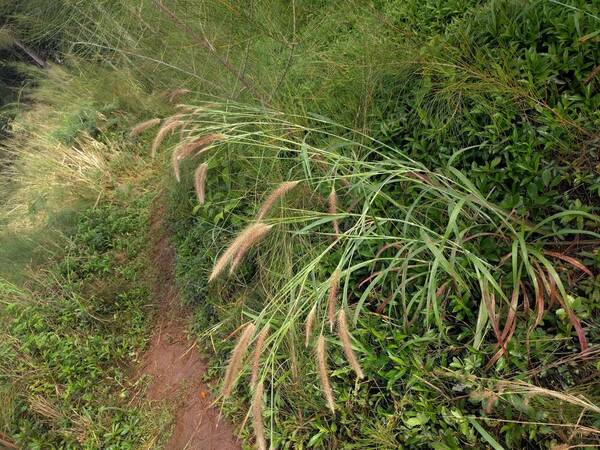
Habit
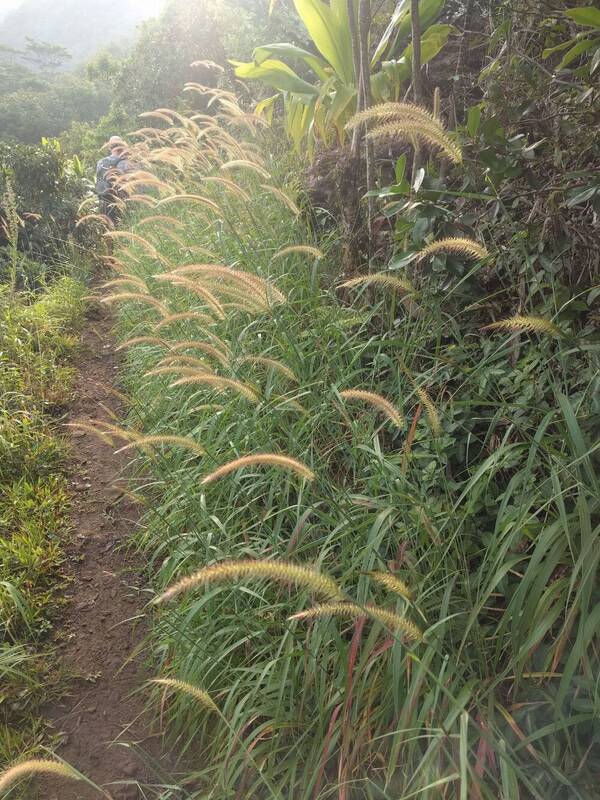

Spikelets
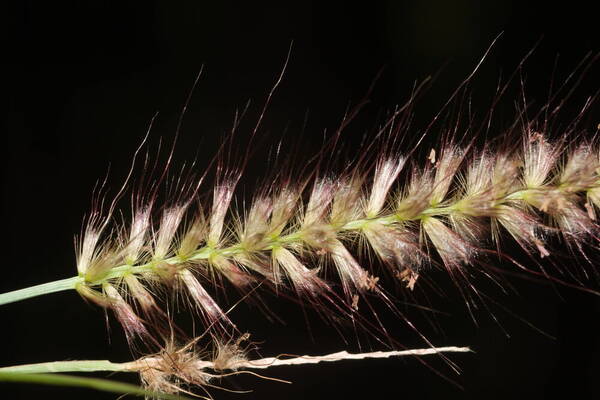

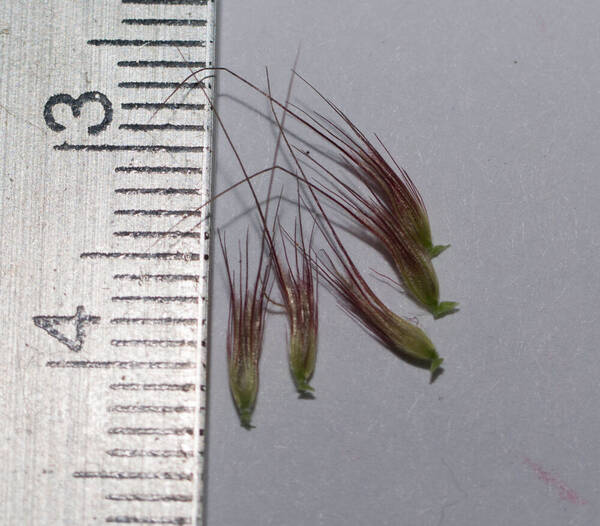
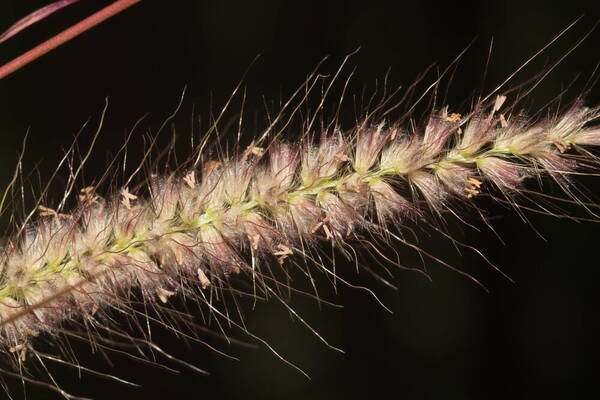
Description
Annual or perennial. Culms 30–200 cm. high, copiously branched. Leaf laminae 3–16 mm. wide. Panicle 3–25 cm. long, linear; rhachis angular with sharp decurrent wings below the involucral scars, glabrous; involucre enclosing 1 sessile spikelet; bristles scaberulous or densely ciliate, tawny or purple, the longest 5–25 mm. Spikelets 2–5 mm. long. Inferior glume suppressed or very small, the superior as long as spikelet. Superior floret coriaceous, shining, subacute, readily deciduous at maturity.
(Description source: Launert, E. & Pope, G.V. (eds.). 1989. Flora Zambesiaca. Volume 10. Part 3. Kew, London. 152 pp. )
Plants annual or perennial; cespitose from a hard, knotty base. Culms 30-200 cm, erect, branching; nodes glabrous. Sheaths glabrous, margins ciliate; ligules 1.5-2.7 mm; blades 15-55 cm long, 4-18 mm wide, flat, glabrous or pubescent. Panicles terminal, 10-25 cm long, 15-30 mm wide, fully exerted from the sheaths, erect to drooping, white, yellow, light brown, or pink to deep purple; rachises terete, scabrous. Fascicles 33-45 per cm, disarticulating at maturity; fascicles axes 0.2-0.5 mm, with 1 spikelet; outer bristles 13-30, 1.3-5 mm, scabrous; inner bristles 6-14, 4.3-11.5 mm, long ciliate; primary bristles 14-25 mm, long-ciliate, noticeably longer than the other bristles. Spikelets 3-4.5 mm, sessile; lower glumes absent or to 2 mm, veinless; upper glumes 3-4.5 mm, glabrous, 5-7-veined, 3-lobed; lower florets sterile or staminate; lower lemmas 3-3.9 mm, 5-7-veined, apices lobed; lower paleas 2.9-3.7 mm; anthers absent or 1.7-2 mm; upper florets disarticulating at maturity; upper lemmas 1.7-3 mm, coriaceous, shiny, 5-veined, apices ciliate; anthers 1.3-2.1 mm. Caryopses about 1.7 mm, concealed by the lemma and palea at maturity. 2n = 18, 36, 45, 48, 52, 53, 54, 56, 78.
(Description source: Barkworth, M.E., Capels, K.M., Long, S. & Piep, M.B. (eds.) 2003. Flora of North America, north of Mexico. Volume 25. Magnoliophyta: Commelinidae (in part): Poaceae, Part 2. Oxford University Press, New York. 783 pp http://floranorthamerica.org/Pennisetum_polystachion )
Perennials; culms loosely tufted, erect, 6-15 dm tall, scabrous and often branching below the panicles. Sheaths glabrous, or the lower ones sometimes pubescent; ligule a conspicuous line of hairs ca. 1 mm long, connate at base; blades 6-40 cm long, 3-15 mm wide, pilose on both surfaces, upper surface with a tuft of silky hairs 5-6 mm long at base. Panicles yellowish brown to purple, dense, cylindrical, 13-18 cm long, ca. 1 cm in diameter (excluding scabrous portion of the bristles); spikelet 1 per involucre, 2-flowered, first floret staminate, outer involucral bristles delicate, scabrous, 3-4 mm long, inner involucral bristles 15- 17 mm long, densely silky plumose; first glume minute or obsolete, second glume thin, papery, slightly longer than lemmas, 5-7-nerved, glabrous, apex acute to slightly aristate; first lemma similar to second glume, ca. 3 mm long, 3-5-nerved, apex acute; first palea hyaline, linear, ca. 2.5 mm long, 2-nerved, apex acute; second lemma indurate, glossy, ovate, ca. 2 mm long, readily separating from the spikelets at maturity, margins enclosing the palea, apex acute, pubescent; second palea similar to second lemma, papery, 1.7-2 mm long, margins inrolled. Caryopsis pale brown, ellipsoid, ca. 1.5 mm long, remaining enclosed within the floret. [2n = 34, 36, 45, ca. 48, ca. 52-54, 56, 63, 72.]
(Description source: O’Connor, P.J. 1990. Poaceae, pp. 1481–1604. In: Wagner W.L., Herbst D.R. & Sohmer S.H. (eds.)., Manual of the flowering plant of Hawaiʻi. Vol. 2. University of Hawaii Press & Bishop Museum Press, Honolulu )